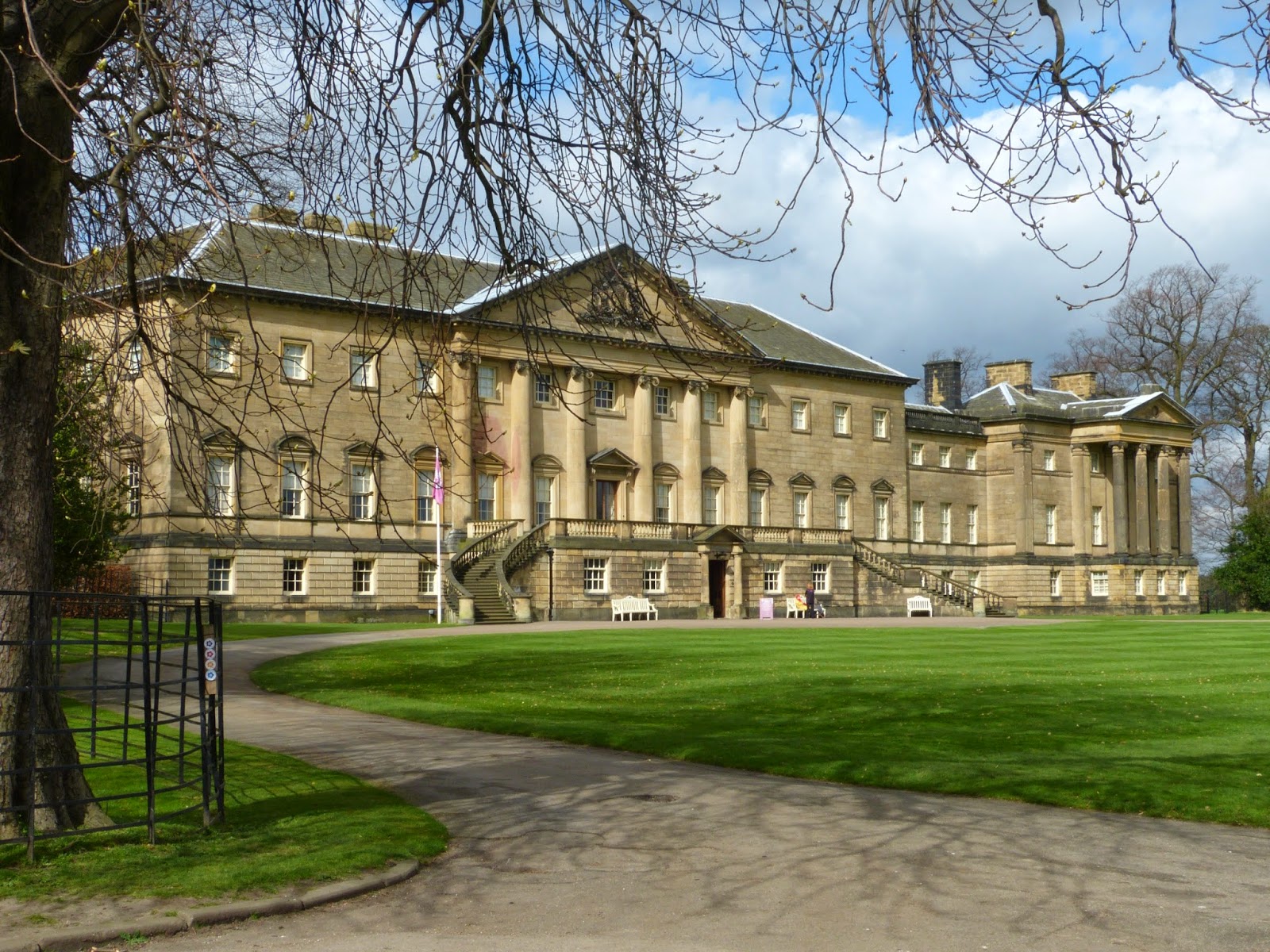 |
| Nostell Priory (2014) |
Nostell Priory is a Palladian mansion with Neoclassical interiors designed by Robert Adam. It is situated near Wakefield in Yorkshire.
History
When Sir Rowland Winn, 4th Baronet, returned from his Grand Tour in 1727, he was inspired to build a new house on his land in the Palladian style. Colonel James Moyser, a local gentleman architect, drew up plans and in 1736, the young James Paine was employed to work them out. Paine was still working on the house in 1765 when the 4th Baronet died.
Sir Rowland’s son employed Robert Adam to continue work on the house. Adam designed the interiors of the house in the Neo-classical style and added the curving stairways at the front of the house leading to the first floor entrance hall. He also planned four new wings, but only one – the family wing - was ever built. The 5th Baronet died in 1785 before Adam’s work was completed, leaving the asymmetrical façade that we see today.
 |
| Robert Adam's sweeping stairway leading to the first floor entrance hall of Nostell Priory |
Georgian connections
Sir Rowland Winn, 4th Baronet (1706-1765)
Sir Rowland Winn, 4th Baronet, inherited Nostell at the age of 16. He started to build the Palladian house after returning from his Grand Tour in 1727. He married Susanna Henshaw, an heiress, in 1729, and they had three children, Rowland, Edward and Anne. Sir Rowland was made High Sheriff of Yorkshire in 1731.
James Paine was employed to work on Nostell Priory on and off for thirty years. Nostell was one of his first commissions after finishing his studies at St Martin’s Lane Academy in London and it was significant in the development of his architectural career.
An exquisite doll’s house was made for the Winns in about 1735 which is on display in the house. The doll’s house is architecturally accurate and beautifully crafted, which has led to the family tradition that it was made by Thomas Chippendale when he was a boy. Sadly there is no evidence to support this. The model was probably made for adults to enjoy rather than as a children’s toy.
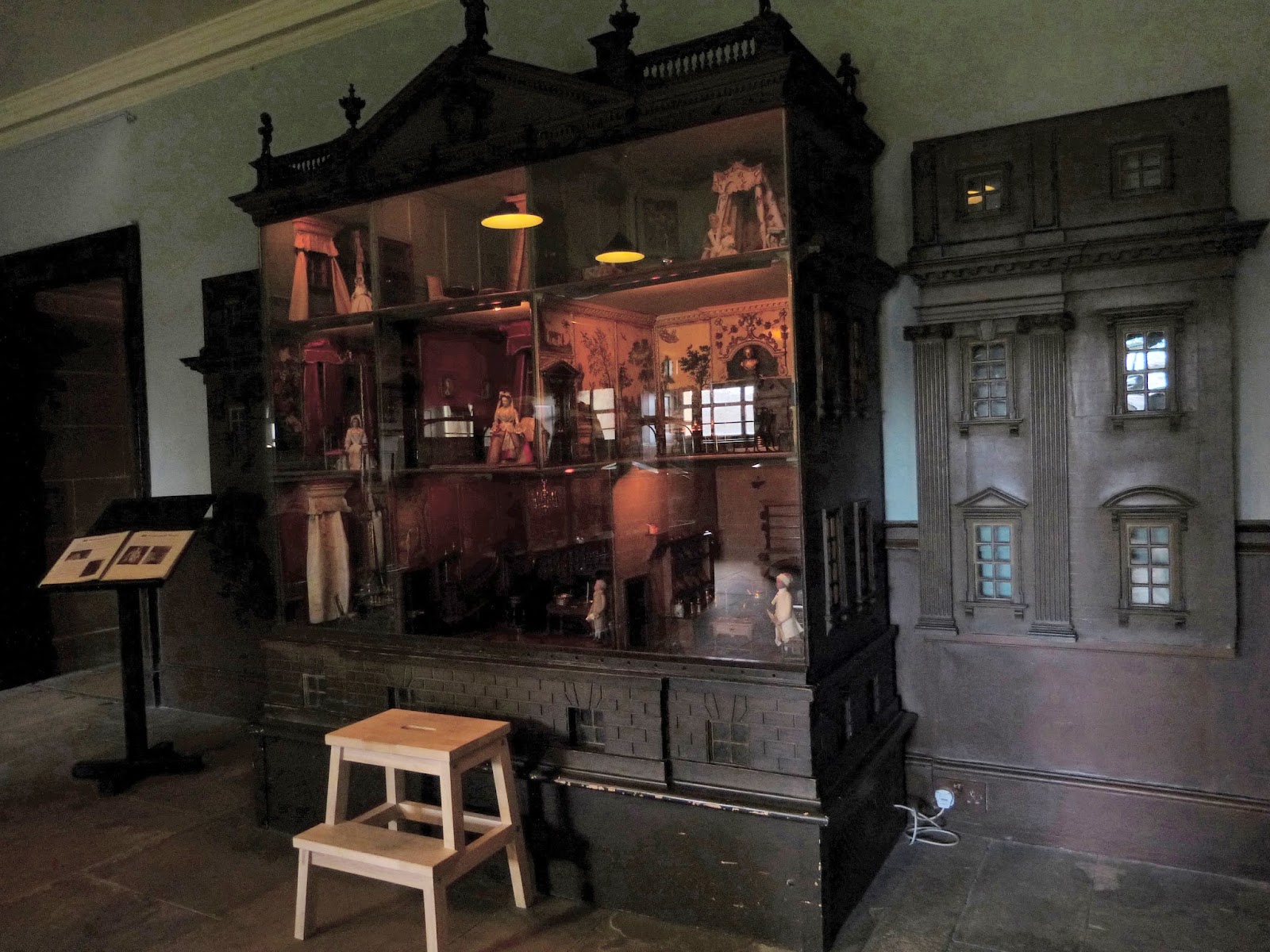 |
| Georgian doll's house, Nostell Priory |
The 5th Baronet was born in 1739 and finished his education in Switzerland. He spent a lot of money on horses and later built a riding school at Nostell. Whilst in Switzerland, he met Sabine d’Hervart, daughter of the Governor of Vevey, whom he married in 1761. The couple were devoted to each other and had two children, Rowland and Esther. After inheriting in 1765, Rowland replaced Paine with Robert Adam to finish work on the house.
Robert Adam was the most successful architect of the late 18th century. He was good at cultivating important contacts and had a much closer relationship with his employers than his predecessors had done. Adam designed Neo-classical interiors for the house and employed a trio of master craftsmen to help him: Antonio Zucchi for decorative painting, Joseph Rose the Younger for plastering and Thomas Chippendale for cabinet making.
As a result, Nostell Priory has a huge collection of Chippendale furniture, complete with bills of sale to verify its authenticity and date his work, as well as stunning interior decorations.
 |
| The State Dressing Room, Nostell Priory, with green and gilt japanned chinoiserie furniture by Chippendale |
Adam’s work was brought to an abrupt end when Sir Rowland was killed in a carriage accident in 1785 .
Sir Rowland Winn, 6th Baronet (1775-1805)
Sir Rowland’s wife Sabine was devastated at her husband’s death. She continued to live at Nostell with her two children, Esther and Sir Rowland, 6th Baronet, who was only ten when his father died. The new Sir Rowland became an avid sportsman and kept several racehorses in the stables at Nostell. He was made High Sheriff of Yorkshire in 1799 but died unmarried in 1805.
John and Charles Winn
When the 6th Baronet died, the title was inherited by a cousin, but Sir Rowland provided for his sister’s children, John, Charles and Louisa Williamson, whose father was a Manchester baker. They assumed the name Winn and became heirs to the estate. John died in Rome in 1817 whilst on the Grand Tour.
Charles married his cousin Priscilla Strickland in 1819 and employed Thomas Ward to redecorate Nostell. Charles bought lots of furniture from Gillows and became an avid collector. He brought back his brother John’s collection of Etruscan vases from Rome and acquired vast numbers of paintings, books and antiquities.
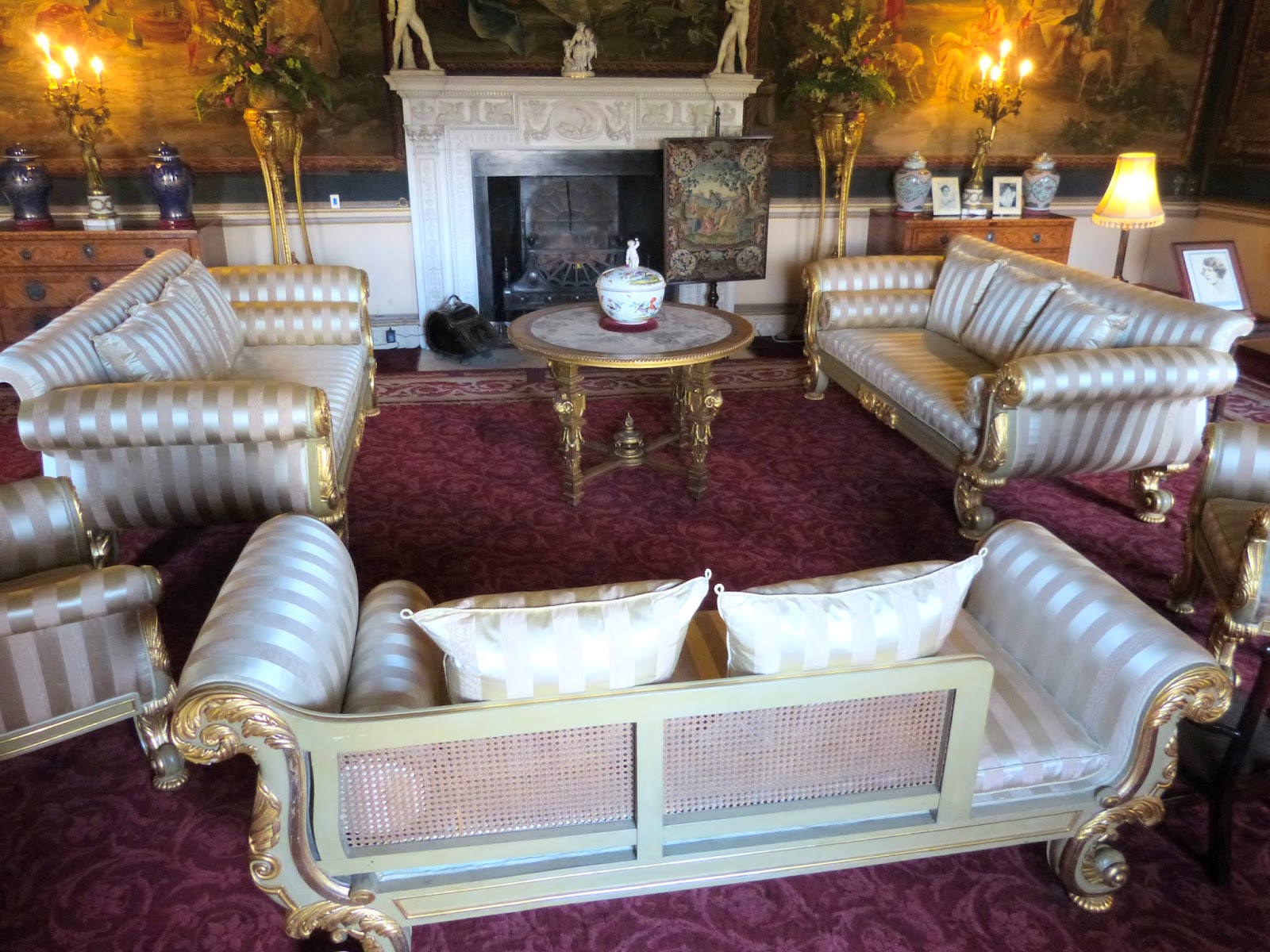 |
| The Tapestry Room with 1820s giltwood furniture and a white marble chimneypiece by Adam |
There is so much to see at Nostell Priory that it would be impossible to list everything worthy of note, but some of my favourites are:
• The Palladian exterior of Nostell Priory designed by James Paine
 |
| Nostell Priory (2014) |
• Robert Adam’s majestic steps leading to the first floor entrance (shown above)
• The decorated alcove in the Top Hall designed by Robert Adam and carried out by Joseph Rose the Younger
• The Chippendale chairs in the Top Hall
• The lady’s writing table with retractable fire-screen by Chippendale in the Saloon
• Chippendale’s Palladian-style desk in the Library
• The portrait of Sir Rowland Winn, 5th Baronet, and his wife Sabine displayed in the library in which it was painted
• Angelica Kauffman’s self-portrait in the Drawing Room
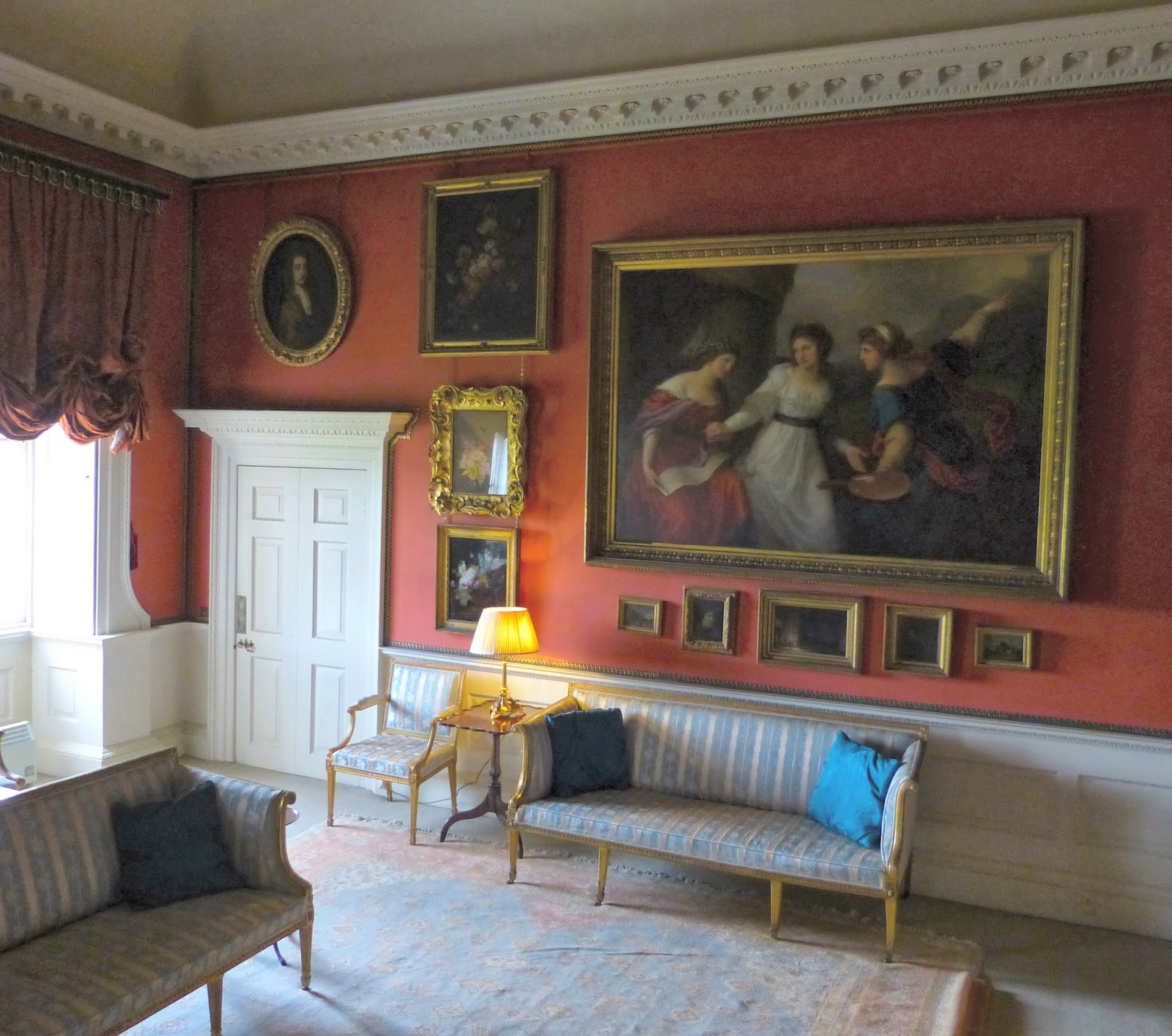 |
| "Angelica hesitating between the Arts of Music and Painting" by Angelica Kauffman (1791) in the Drawing Room, Nostell Priory |
Last visited: March 2014
More gems about Nostell Priory in my April 2014 newsletter.
Rachel Knowles writes clean/Christian Regency era romance and historical non-fiction. She has been sharing her research on this blog since 2011. Rachel lives in the beautiful Georgian seaside town of Weymouth, Dorset, on the south coast of England, with her husband, Andrew.
Find out more about Rachel's books and sign up for her newsletter here.If you have enjoyed this blog and want to encourage me and help me to keep making my research freely available, please buy me a virtual cup of coffee by clicking the button below.
Sources used include:
Raikes, Sophie and Knox, Tim, Nostell Priory and Parkland (2001)
The National Trust website
All photographs © RegencyHistory.net




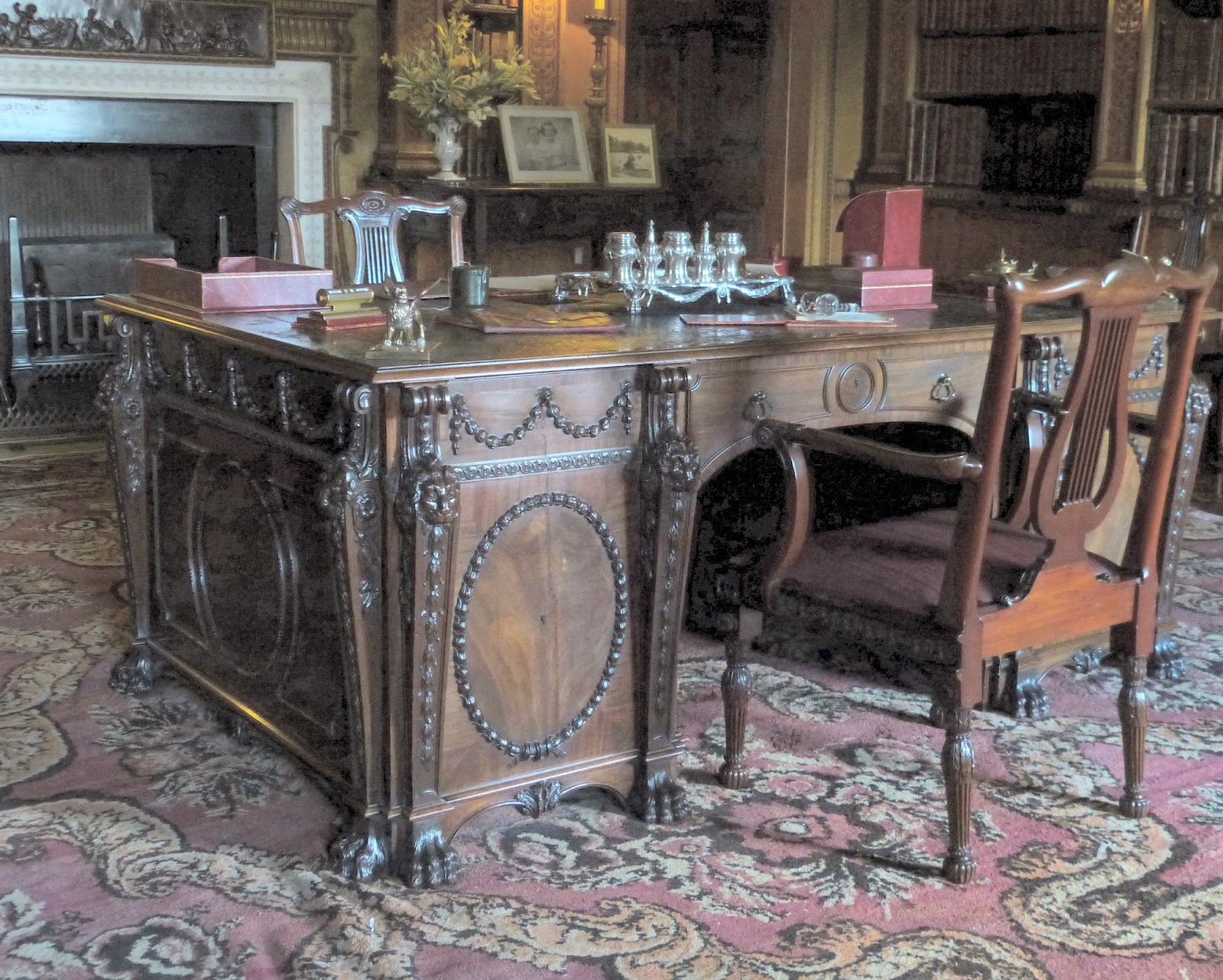


Great post and beautiful pictures too. I can't tell you what I like more!
ReplyDeleteThanks for the kind comments on my post. :) I will pass on your praise of the photos to my husband.
DeleteHow wonderful, are there any neoclassical buildings to tour in Cambridgeshire do you know?
ReplyDeleteDowning College, Cambridge, is a great example of a Neo-classical facade.
DeleteI think it is so sad that these Baron's died at such a young age.
ReplyDelete